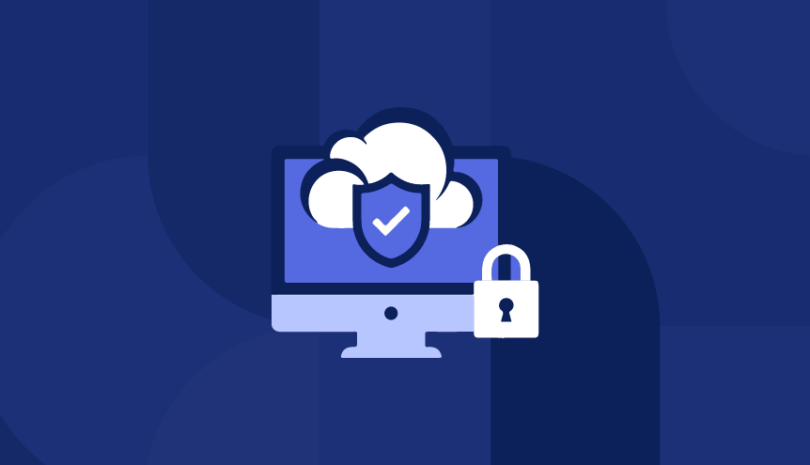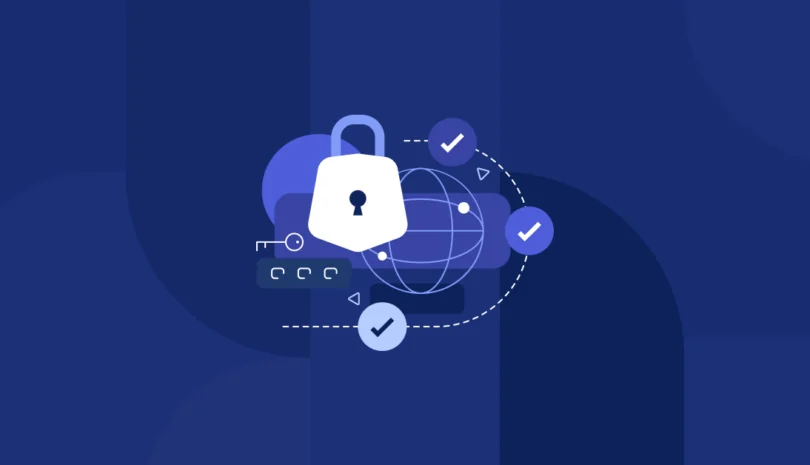Cyber resilience is no longer just a goal, it’s a necessity. As digital threats grow more complex and persistent, organizations must do more than just prevent attacks; they need to withstand and recover from them. In 2025, this means having the right strategies, tools, and frameworks in place to adapt quickly and keep operations running, even under pressure.
The National Institute of Standards and Technology (NIST) continues to play a critical role in helping organizations strengthen their cybersecurity posture. Its guidance is widely respected for being practical, flexible, and rooted in real-world scenarios. By following NIST’s best practices, companies can build more resilient systems and better protect their most valuable assets.
For organizations of all sizes, prioritizing cyber resilience is essential to navigating today’s threat landscape. It’s not just about avoiding downtime or data breaches, it’s about earning trust, maintaining compliance, and ensuring long-term success. In this post, we’ll break down the top NIST recommendations you should focus on to enhance cyber resilience in 2025 and beyond.
Understanding Cyber Resilience and NIST Frameworks
Cyber resilience is an organization’s ability to anticipate, withstand, recover from, and adapt to cyberattacks or disruptions. It’s not just about keeping threats out, it’s about ensuring your business can continue to operate when something goes wrong. In 2025, with threats becoming more advanced and persistent, resilience is essential to maintaining trust, continuity, and compliance.
The National Institute of Standards and Technology (NIST) provides several foundational frameworks that help businesses strengthen their cybersecurity and build resilience. The NIST Cybersecurity Framework (CSF) offers a flexible, risk-based approach to identifying, protecting, detecting, responding to, and recovering from cyber threats. It’s widely used across industries to align security strategies with business goals.
NIST Special Publication 800-53 outlines a robust set of security and privacy controls for information systems. While originally designed for federal agencies, many private-sector organizations use it to elevate their cybersecurity posture.
NIST 800-171 focuses on protecting Controlled Unclassified Information (CUI) in non-federal systems, critical for contractors and organizations that handle sensitive government-related data.
Together, these frameworks provide a strong foundation for cyber resilience, helping organizations manage evolving risks and maintain operational stability in an increasingly complex digital landscape.
Implement a Risk-Based Approach to Security
A risk-based approach to cybersecurity helps organizations focus resources where they’re needed most. Instead of treating all threats equally, this method begins with a thorough risk assessment to identify critical assets, potential vulnerabilities, and the likelihood and impact of different threats.
Once risks are identified, security controls should be prioritized based on their severity and business impact. This ensures that high-risk areas receive immediate attention, while lower-risk issues are addressed appropriately over time.
NIST’s Risk Management Framework (RMF) provides clear guidance for implementing this approach. It outlines a structured process for assessing risk, selecting and applying controls, monitoring their effectiveness, and continuously improving over time. Aligning with the RMF not only strengthens resilience, it also supports compliance with federal and industry regulations.
By focusing on the most significant risks first, organizations can build a more effective and adaptive security strategy that evolves alongside today’s dynamic threat landscape.
Strengthen Identity and Access Management (IAM)
Strong Identity and Access Management (IAM) is essential for maintaining control over who can access your systems and data. As threats evolve, enforcing Zero Trust Architecture (ZTA) principles is key, no user or system is automatically trusted, even inside the network. Every access request must be verified, validated, and limited.
Multi-Factor Authentication (MFA) adds an important layer of protection by requiring users to provide two or more forms of verification before gaining access. It significantly reduces the risk of compromised credentials leading to breaches.
Implementing Role-Based Access Control (RBAC) and least privilege policies ensures users only have access to the data and systems necessary for their roles, nothing more. This minimizes potential damage from insider threats or compromised accounts.
Together, these IAM strategies help reduce risk, improve visibility, and support a resilient, zero-trust security posture aligned with NIST’s best practices.
Enhance Threat Detection and Incident Response
In today’s fast-moving threat landscape, early detection and a rapid, coordinated response are critical to minimizing damage. Implementing real-time monitoring through Security Information and Event Management (SIEM) tools allows organizations to detect anomalies, flag suspicious activity, and respond before threats escalate.
NIST’s Incident Response Lifecycle offers a structured, proven approach to managing cyber incidents:
- Preparation: Establish policies, tools, and response teams before an incident occurs.
- Detection & Analysis: Identify and investigate events to determine their scope and impact.
- Containment, Eradication & Recovery: Limit damage, remove threats, and restore normal operations.
- Post-Incident Activities: Review what happened, document lessons learned, and improve processes.
To ensure your teams are truly ready, conduct regular tabletop exercises that simulate realistic breach scenarios. These drills test your incident response capabilities and expose gaps before a real attack strikes.
By combining continuous monitoring with a tested response plan, organizations can stay ahead of threats, reduce downtime, and recover faster. Aligning these efforts with NIST guidance ensures a more resilient, prepared cybersecurity posture for 2025 and beyond.
Improve Data Protection and Encryption Standards
Protecting sensitive data is a cornerstone of cyber resilience. Implementing NIST-recommended encryption algorithms, such as AES for data at rest and TLS for data in transit, helps ensure that information remains secure, even if systems are compromised.
It’s equally important to maintain secure storage and transmission practices. Data should be encrypted both at rest and in motion, with access tightly controlled and continuously monitored. This reduces the risk of exposure from both internal and external threats.
To guard against data loss, organizations should deploy automated backup and recovery solutions. These systems regularly save encrypted copies of critical data and make it easy to restore operations after an incident, whether due to ransomware, hardware failure, or human error.
By aligning with NIST encryption and data protection standards, businesses can strengthen their defenses, protect customer trust, and ensure business continuity in the face of evolving cyber risks.
Strengthen Supply Chain and Third-Party Risk Management
In 2025, supply chain and third-party risks continue to be a major source of cyber incidents. To build true cyber resilience, organizations must look beyond their internal systems and assess the security of their entire vendor ecosystem.
Start by conducting vendor risk assessments aligned with NIST guidelines, focusing on each partner’s security posture, data handling practices, and potential impact on your operations. These assessments help identify weak links before they become entry points for attackers.
Enforce clear security requirements for third-party vendors, including contractual obligations around access control, encryption, and incident reporting. Holding vendors to your standards helps reduce shared risk.
Finally, implement continuous monitoring to track third-party security performance over time. Point-in-time assessments aren’t enough, real-time visibility ensures you can respond quickly to changes or emerging threats across your supply chain.
Prioritizing third-party risk management is critical to building a resilient, secure business environment.
Automate Security Controls and Continuous Monitoring
Automation is a key enabler of cyber resilience, helping organizations respond to threats faster and reduce human error. AI-driven threat detection tools can analyze vast amounts of data in real time to identify unusual behavior, detect threats early, and prioritize response efforts based on risk.
Automated patch management ensures systems stay up to date with the latest security fixes, without relying on manual processes that often leave vulnerabilities exposed. Timely patching is critical to closing known gaps before attackers can exploit them.
Implementing Continuous Diagnostics and Mitigation (CDM) solutions, as recommended by NIST, provides real-time visibility into security risks across your environment. CDM tools help detect misconfigurations, monitor compliance, and support rapid remediation efforts.
By automating key security functions, organizations can scale their defenses, reduce response times, and maintain a proactive, adaptive cybersecurity posture in an increasingly complex threat landscape.
Foster a Cybersecurity Culture and Workforce Training
Technology alone isn’t enough, people play a critical role in cyber resilience. Building a strong security culture starts with regular security awareness training to ensure employees recognize threats and understand how to respond. From safe password practices to identifying suspicious links, every employee should know the basics.
Phishing simulations and cybersecurity drills reinforce training through real-world scenarios. These exercises help identify gaps in knowledge, improve response times, and build confidence across teams.
Most importantly, organizations must cultivate a cyber-resilient mindset across all departments, not just IT. This means making cybersecurity a shared responsibility, integrating it into daily operations, and empowering employees to report issues without fear.
A well-trained, security-aware workforce is one of the most effective defenses against cyber threats. When everyone understands their role in protecting the organization, resilience becomes part of the culture – not just a checkbox.
NIST Best Practices: Proactive Cyber Resilience
Proactive cyber resilience starts with understanding where you stand. Begin by assessing your current cybersecurity maturity using frameworks like the NIST Cybersecurity Framework (CSF). This helps identify strengths, gaps, and priorities across your security program.
Next, invest in tools and technologies that enhance resilience, such as SIEM platforms for real-time monitoring, automated patch management, endpoint detection and response (EDR), and AI-driven threat intelligence. These tools enable faster detection, response, and recovery.
Finally, ensure your cybersecurity investments align with business objectives. Resilience isn’t just about IT, it’s about protecting operations, customer trust, and long-term growth. Engage leadership in cybersecurity planning to ensure risk tolerance, compliance needs, and strategic goals are fully considered.
By following NIST best practices with a forward-looking approach, organizations can move from reactive defense to proactive resilience, building security programs that evolve with threats and support business success.
How Businesses Can Implement NIST Best Practices in 2025
To build true cyber resilience in 2025, organizations must move from reactive defense to proactive strategy. That means conducting regular risk assessments, strengthening identity and access management, securing data, monitoring third-party risks, and automating key security controls, all aligned with NIST best practices.
This year’s evolving threat landscape demands more than just compliance. Proactive cyber resilience ensures your business can withstand, adapt to, and recover from disruptions while maintaining trust and continuity.
NIST provides a clear, flexible roadmap for improving cybersecurity maturity across industries. By adopting these frameworks, businesses can not only meet regulatory requirements but also embed security into their culture and operations. Cyber threats aren’t slowing down. Organizations that embrace NIST’s proven guidance now will be better prepared to manage risk, support innovation, and safeguard their future.
If you’re ready to put these best practices into action, Panorays can help accelerate your journey. Our platform is built to operationalize NIST-aligned third-party risk management; automating assessments, centralizing oversight, and giving you full visibility into your extended vendor ecosystem. Whether you’re aiming to improve compliance, reduce manual effort, or scale your program with confidence, Panorays gives you the tools to do it efficiently.
Book a personalized demo today and discover how Panorays can help you simplify third-party risk management, enhance cyber resilience, and build a vendor network you can trust.
NIST Best Practices FAQs
-
NIST provides detailed guidance on evaluating and managing third-party cyber risks, particularly through frameworks like NIST SP 800-53 and 800-171. These help organizations assess vendor security practices, enforce requirements, and implement continuous monitoring—critical for securing the extended enterprise.
-
While NIST itself is not a regulatory body, its frameworks align closely with major compliance requirements. For example, NIST’s risk-based approach and emphasis on data protection support GDPR principles, while its focus on operational resilience complements DORA’s mandates for financial institutions. Using NIST guidance can streamline compliance efforts and demonstrate due diligence.
-
NIST doesn’t endorse specific vendors or products. Instead, it outlines security capabilities and control objectives, allowing organizations to choose technologies that best fit their needs. Whether implementing SIEM, MFA, or encryption, the goal is to meet NIST-recommended outcomes, not follow a one-size-fits-all toolset.



